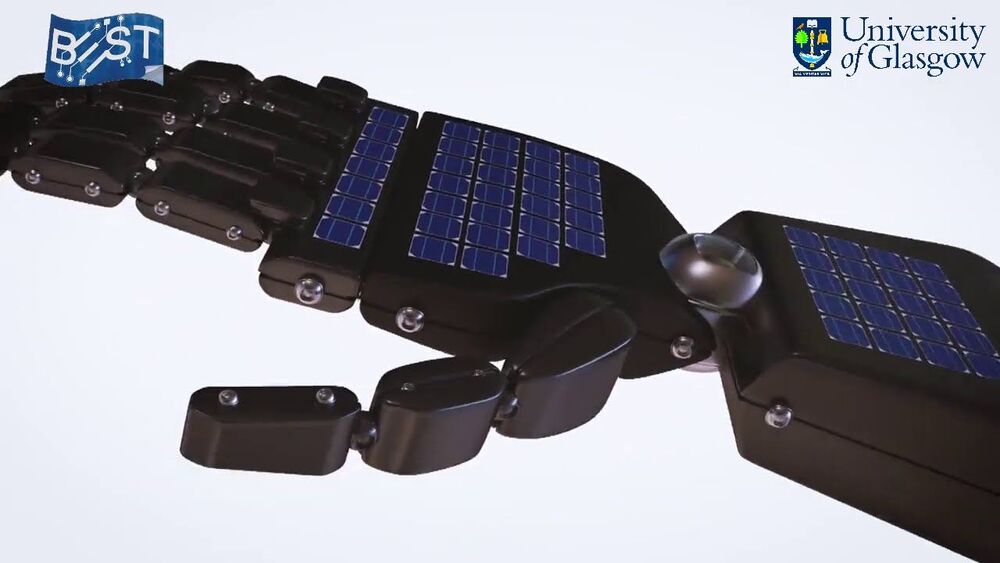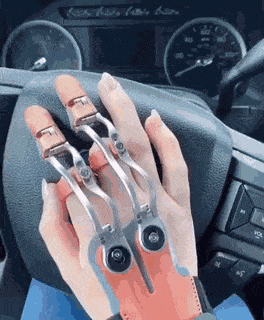Archive for the ‘cyborgs’ category: Page 55
Dec 3, 2020
Camouflage Skin Developed That Provides On-Demand Cloaking in Both Daylight and Night
Posted by Quinn Sena in category: cyborgs
Thermally controlled, active imperceptible artificial skin in visible-to-infrared range.
Cephalopods’ exceptional ability to hide into any background has inspired researchers to replicate their fascinating ability to camouflage in the infrared (IR) and visible spectrum. Recent advances offered a number of physical mechanisms to reproduce the cloaking functionalities of cephalopods. However, most of works focused on either camouflaging in the visible or IR camouflage range only: not dual modes in a single device structure that can readily switch between the visible and IR mode according to a suitable situation.
Recently, Prof. Seung hwan Ko’s group in Seoul National University in Republic of Korea demonstrated the visible-to-IR active ands camouflage skin that provides an on-demand cloaking platform both in daylight and at night with a single input variable: Temperature (T). The soft thermoelectric device that is capable of active cooling and heating serves as a backbone structure to fine-tune the surface of each pixel and thereby enables thermal camouflage in the IR range by matching the ambient temperature. The Ko’s group further extended the camouflage range to the IR-to-visible spectrum by incorporating thermochromic liquid crystal at the surface that changes light reflectance ® based on the device temperature, enabling the expressing a variety of colors by controling temperature. The camouflage system as a whole encompasses the two independent spectrums into a ‘full spectrum’ with a single soft structure by controlling temperature.
Dec 2, 2020
Energy-generating synthetic skin for affordable prosthetic limbs and touch-sensitive robots
Posted by Saúl Morales Rodriguéz in categories: biotech/medical, cyborgs, robotics/AI, solar power

A new type of energy-generating synthetic skin could create more affordable prosthetic limbs and robots capable of mimicking the sense of touch, scientists say.
In an early-view paper published in the journal IEEE Transactions on Robotics, researchers from the University of Glasgow describe how a robotic hand wrapped in their flexible solar skin is capable of interacting with objects without using dedicated and expensive touch sensors.
Nov 30, 2020
Man With Bionic Arm Shows How He Lives
Posted by Raphael Ramos in categories: cyborgs, transhumanism
Henrik shows off his bionic arm! 😃
Henrik shows how he performs everyday tasks with a bionic arm 😮 🦾.
Nov 29, 2020
This contact lens from Black Mirror is here
Posted by Raphael Ramos in categories: biotech/medical, cyborgs, transhumanism
Nov 28, 2020
Finger prosthetics We really are living in the future
Posted by Matthew White in categories: biotech/medical, cyborgs
Finger prosthetics We really are living in the future, wow GIFs | Search for More wow GIFs on www.GIF-VIF.com.
Nov 27, 2020
Electronic skin has a strong future stretching ahead
Posted by Saúl Morales Rodriguéz in categories: biotech/medical, cyborgs, nanotechnology, robotics/AI
A material that mimics human skin in strength, stretchability and sensitivity could be used to collect biological data in real time. Electronic skin, or e-skin, may play an important role in next-generation prosthetics, personalized medicine, soft robotics and artificial intelligence.
“The ideal e-skin will mimic the many natural functions of human skin, such as sensing temperature and touch, accurately and in real time,” says KAUST postdoc Yichen Cai. However, making suitably flexible electronics that can perform such delicate tasks while also enduring the bumps and scrapes of everyday life is challenging, and each material involved must be carefully engineered.
Most e-skins are made by layering an active nanomaterial (the sensor) on a stretchy surface that attaches to human skin. However, the connection between these layers is often too weak, which reduces the durability and sensitivity of the material; alternatively, if it is too strong, flexibility becomes limited, making it more likely to crack and break the circuit.
Nov 26, 2020
Extreme Bionics: Sculpting Human Physiology
Posted by Ira S. Pastor in categories: biotech/medical, cyborgs, neuroscience, transhumanism

Ira Pastor, ideaXme life sciences ambassador interviews Dr. Hugh Herr, Associate Professor MIT Media Lab and head of the Biomechatronics group, @MIT Media Lab.
Ira Pastor comments:
Continue reading “Extreme Bionics: Sculpting Human Physiology” »
Nov 23, 2020
The human brain inspires RMIT researchers to develop a light-powered AI chip
Posted by Brent Ellman in categories: cyborgs, drones, robotics/AI, transhumanism
The chip could potentially be used to power drones, robotics, smart watches, and bionic implants.
Nov 17, 2020
Army-funded algorithm decodes brain signals responsible for behaviors
Posted by Carse Peel in categories: biotech/medical, cyborgs, information science, neuroscience

Like walking and breathing and could one day allow people to control prosthetics simply by thinking…
The US Army is funding a project that could lead to brain-machine interfaces. It includes an algorithm capable of isolating brain signals and linking them to specific behaviors such as walking and breathing.
Continue reading “Army-funded algorithm decodes brain signals responsible for behaviors” »















